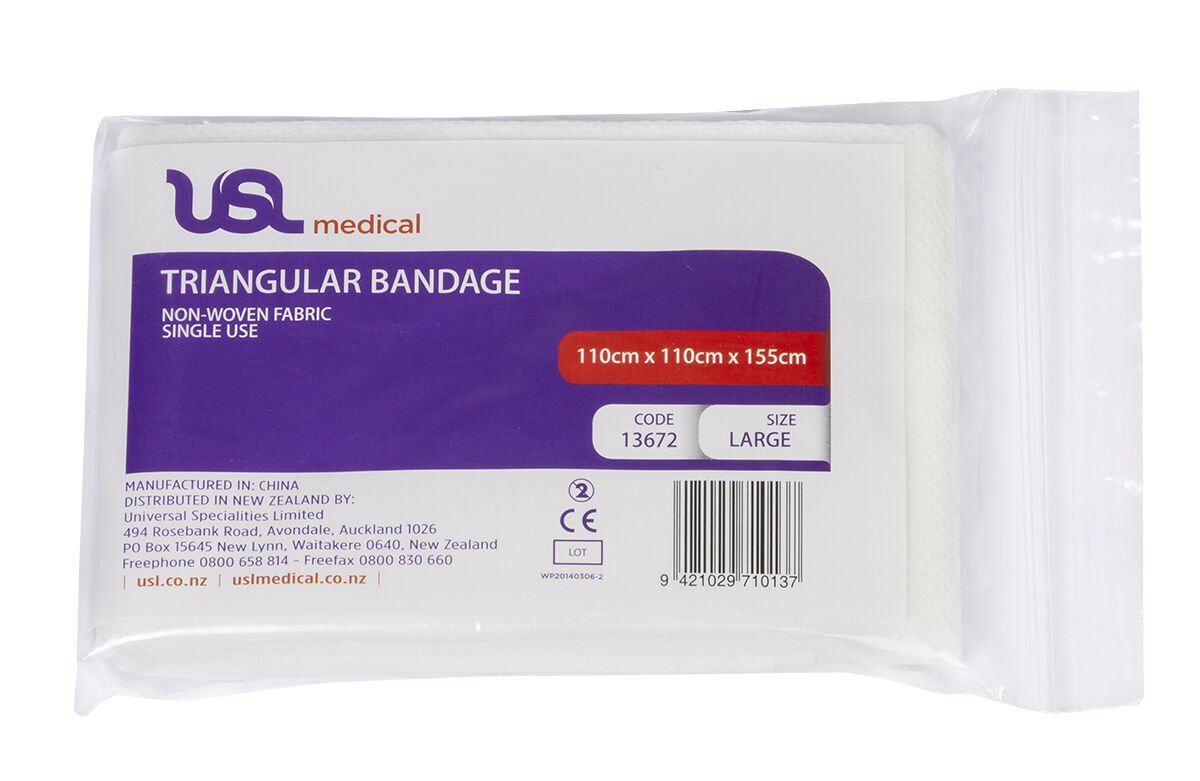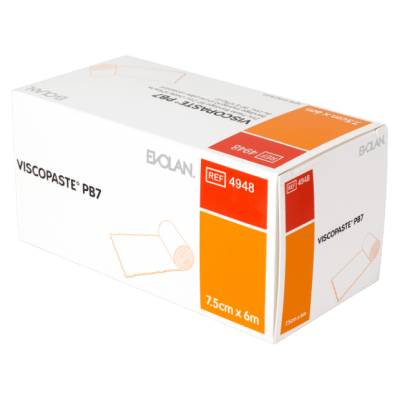Bandages
Welcome to our Wound Care collection.

USL Triangular Bandage
Unit: EACH
$1.62

USL Crepe Bandage
Unit: PKT12
$17.28

USL Conforming Bandage
Unit: PKT12
$8.64

USL Grip Tubular 1m
Unit: EACH
$8.99

USL Grip Tubular Bandage 10m
Unit: EACH
$22.99

USL Sport Cohesive Bandage Wrapped
Unit: ROLL
$4.99

Bandage Viscopaste PB7 7.5cm x 6m
Unit: EACH
$34.00
Bandages
Here you can find many bandages meant to protect your wound from infections. Dressings are pads of gauze or cloth that can be placed directly against the wound to absorb blood and other fluids. Cloth bandages cover dressings and hold them in place.
How can you rest assured that your wound won't get an infection in just 4 steps?
1. Dress the wound
- Put on gloves or use other protection to avoid contact with the victim's blood.
- Clean the wound with mild soap and water.
- Apply a small layer of topical antibiotic if desired.
- Place a clean dressing over the entire wound. Gauze dressings let in the air for faster healing. Nonstick dressings have a special surface that won't cling to the wound.
- If blood soaks through the dressing, place another dressing over the first one.
2. Cover the bandage
- Wrap roller gauze or cloth strips over the dressing and around the wound several times.
- Extend the bandage at least an inch beyond both sides of the dressing.
- Don't wrap the bandage so tight that it interferes with blood flow to healthy tissue.
3. Secure the bandage
- Tie or tape the bandage in place.
- Don't secure the bandage so tight that fingers or toes become pale or blue.
4. Check circulation
- Check circulation in the area below the bandage after several minutes and again after several hours. If circulation is poor, the skin may look pale or blue or feel cold. Signs of poor circulation also include numbness and tingling.
- If circulation is reduced, loosen the bandage immediately. If symptoms continue, seek medical attention.